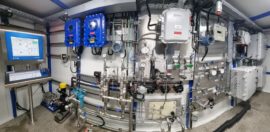
According to a new IEA report, global oil demand is set to rise every year through 2026, but stronger policies and behavior changes could bring a peak in demand soon. Rapid changes in behavior from the pandemic and a stronger drive by governments towards a low-carbon future have caused a dramatic downward shift in expectations for oil demand over the next six years. This is forcing hard decisions on oil-producing countries and companies, which are reluctant to leave resources untapped or to install new capacity that would only sit idle. Could oil demand peak sooner than expected? Or is the world heading into a supply crunch? What will the implications be for the refining industry and trade flows?
“The Covid-19 crisis caused a historic decline in global oil demand – but not necessarily a lasting one. Achieving an orderly transition away from oil is essential to meet climate goals, but it will require major policy changes from governments as well as accelerated behavioral changes. Without that, global oil demand is set to increase every year between now and 2026,” said Dr Fatih Birol, the IEA’s Executive Director.
The current scenario present great challenges to the crude oil refining industry, which have to adapt the shift from fossil fuels to renewable energy and light olefins production from available feedstocks. As a result of sustainable efforts, refineries are facing the challenge of increased complexity of process control and supply chain management. The modern Process Analysis (PA), Artificial Intelligence (AI) and Machine Learning (ML) technologies in the context of Industry 4.0 paradigm aims to reduce the complexity of the systems.
Just like internet companies that can create high value by optimizing the commercial assets in the consumer market by data analytics, Modcon PA/AI/ML solutions generates high value by optimizing the assets from process real-time analytics and processes data they have acquired from the operations and productions. The implemented in this solution artificial neural network (NN) dynamic models enables to calculate and predict physical properties and chemical compositions for different process streams, and proposes required set points, that will accomplish the calculated predictions.
Crude oil quality on-line analysis plays an extremely important role in producing the most economic blend with the highest refining margin. It enables to improve the refining margin, and the profitability of the entire crude-to-chemicals processing. Successes that can be attributed to the use of process analyzers include saving in production, product giveaway, operating manpower and energy conservation. The newly redesigned by Modcon Systems MOD-4100 crude analyzer represents a breakthrough in crude oil on-line analysis and performs on-line a variety of different critical crude oil measurements including Distillation, Salt Concentration, SARA, Emulsion stability, Hydrogen Sulfide, RVP, Water and API.
The purpose of Modcon PA, AI and ML package is to provide process engineers with set of modern optimization tools, which enables connectivity, validation and prediction of main KPIs, to take the correct decisions to maintain and improve effective industrial processes management. The implemented in this solution artificial neural network (NN) dynamic models enables to calculate and predict physical properties and chemical compositions for different process streams, and proposes required set points, that will accomplish the calculated predictions.
Reinforcement learning makes use of algorithms that do not rely only on historical data sets, to learn to make a prediction or perform a task. Just like we humans learn using trial and error, these algorithms also do the same. A reinforcement learning agent is given a set of actions that it can apply to its environment to obtain rewards or reach a certain goal. These actions create changes to the state of the agent and the environment. The DRL agent receives rewards based on how its actions bring it closer to its goal.
DRL agents can start by knowing nothing about their environment and selecting random actions. Because reinforcement learning systems figure things out through trial and error, it works best in situations where an action or sequence of events is rapidly established, and feedback is obtained quickly to determine the next course of action — there is no need for reams of historical data for reinforcement learning to crunch through. That makes DRL perfectly suitable for hydrocarbons processing optimization tasks using established metrics in the form of inputs, actions, and rewards.
DRL dynamic model is getting real-time data from process analyzers, which is verified and validated against the laboratory results and predicted products quality. The simulated process’ “digital twin” is continuously updated by process analyzers to allow highest possible efficiency of the process at lowest cost.
Further investment in the PA, AI and ML technologies for sustainable development means for Modcon adopting business strategies and developing advanced technologies that meet the needs of the enterprise today while protecting, sustaining and enhancing the human and natural resources that will be needed in the future.






